Designed to Make You SIT Up
With vision and collaboration, UH students design eye-catching chairs that blend beauty and intention
by Nicholas Nguyen • June 18, 2025
above: The Eddi Chair by Mary Leath
Take a seat — the winners of the annual SIT Furniture Design Awards include four industrial design students from the University of Houston Gerald D. Hines College of Architecture and Design! Furniture design at the Hines College is a core part of the industrial design program’s identity, and students frequently bring home awards for outstanding chair designs at competitions, including the 2025 Bienenstock Furniture Library Competition.
Camila Campos, Mary Leath, and Diya Suresh Nair were part of associate professor and industrial design co-director Jeff Feng’s INDS 3500 studio where a semester was devoted to conceptualizing, designing, and building chairs. The class asked students to create aesthetically pleasing chairs while adhering to real-world constraints like materials, production costs, and manufacturing feasibility. Through mechanical drawings, renderings, and crafting final, functional models, these students brought their ideas to life and to compeititon.
"As always, this chair project serves as a canvas for students to weave their unique stories and passions into their creations. Every winning design transforms personal experiences into a distinctive theme, infusing each chair with its own vibrant soul,” Feng said.
With creative direction firmly in the students’ hands, figuring out their style was intimidating. For Leath, entering a project with little experience in furniture design was a challenge that she overcame by trusting her instincts and gaining the confidence to make bold choices — such as finding inspiration in a tropical house plant. Suresh Nair tackled the experience with diligence, embracing the process and feedback from Feng and her peers to give physical form to an abstract idea.
While students learned a lot about design through conceptual practices and research, practical and technical skills were also required to meet the studio’s criteria. They had to take ink and pixels into the real world through materials.
“The inspiration for the Infini chair came from a desire to evoke a sense of movement, not through physical motion, but through visual flow. Translating that abstract idea into a tangible form required continuous iteration,” she explained.
In a similar vein, Leath worked through each idea she had to discover what she valued as a young designer. She added, “It also deepened my understanding of the 'why' behind great design — what gives objects their emotional resonance and makes them feel meaningful and beautiful.”
Rachel Feine (M.S. ’25) is a recent graduate who entered the competition independently, wanting to explore playful, modular design in furniture to foster imaginative play. Her TETRA Seat focused on form, ergonomics, and how children interact with space; she used inspiration from the game Tetris to create something that was both a set of furniture and building block toys.
She recalled, “Through this project, I learned how deeply thoughtful designing for children must be, requiring careful attention to safety, durability, sensory engagement, and scale.”
While students learned a lot about design through conceptual practices and research, practical and technical skills were also required to meet the studio’s criteria. They had to take ink and pixels into the real world through materials. In her independent project, Feine’s design taught her the importance of choosing colors, materials, and finishes to communicate her ideas and create a piece that was engaging for kids while seamlessly integrating into a modern home environment.
Back in the studio, Campos learned to work with stainless steel for the project, manipulating it through heat, metal bending, and welding — skills she learned on the go. Suresh Nair’s chair also used metal components, which taught her the limits and possibilities of the material “in a more informed and intentional way.” Students relied on collaborating with Keeland Lab staff and each other, too.
“When designing and actually building the chair, it is almost impossible to do it without help from your peers and professors,” Campos said. “Everyone helped everyone when it came to this project.”
These students approached every stage of the design process with curiosity and commitment, from initial sketches on the page to rendered models in digital spaces and building their designs in real life. Their award-winning work reflects a blend of personal vision and collaborative effort, shaped by the rigorous and supportive environment of the College’s industrial design program. Earning recognition from the SIT Furniture Design Awards underscores not only their talent but also their dedication to creating furniture that is both functional and deeply expressive.
See the winning designs shared by our students below.
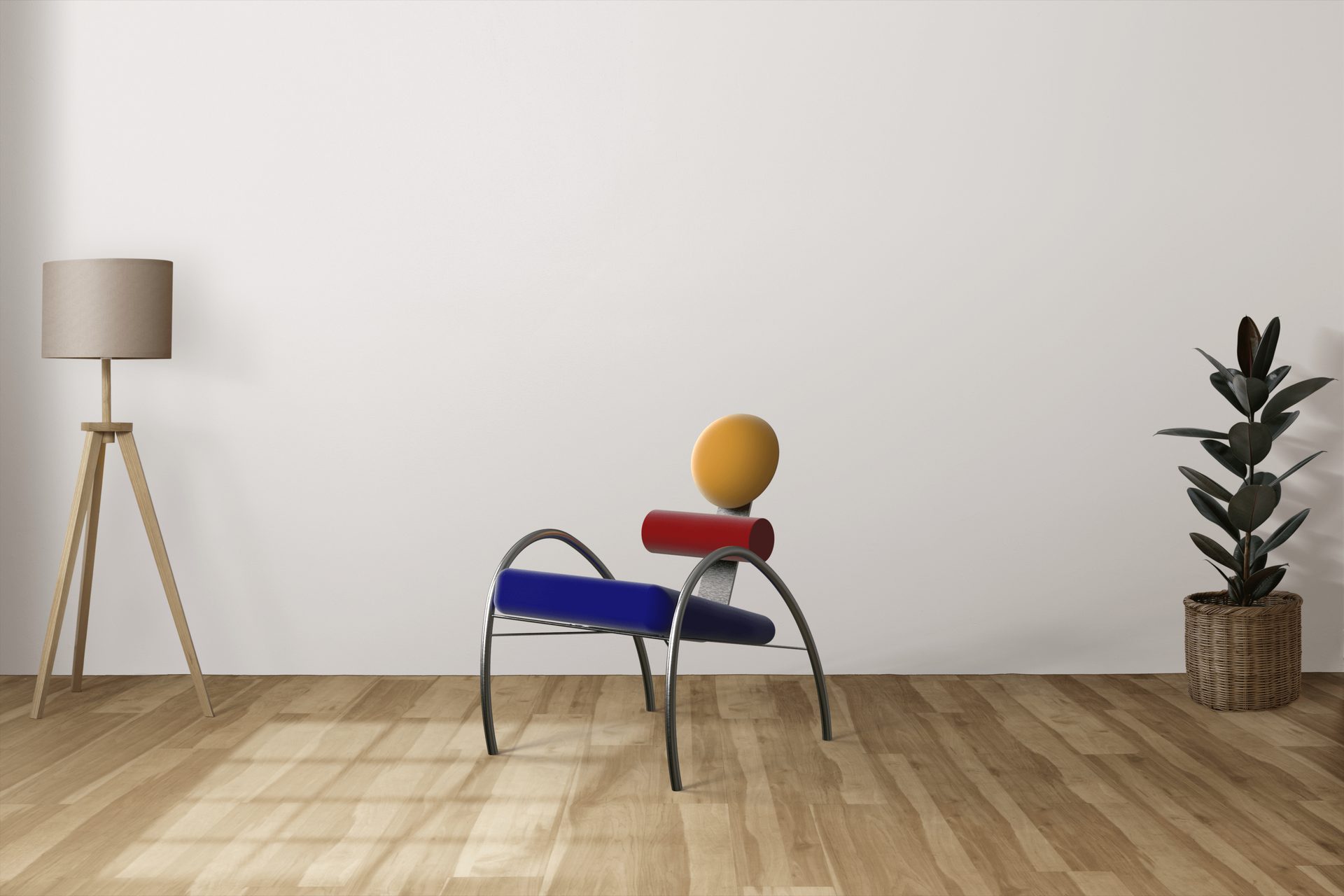
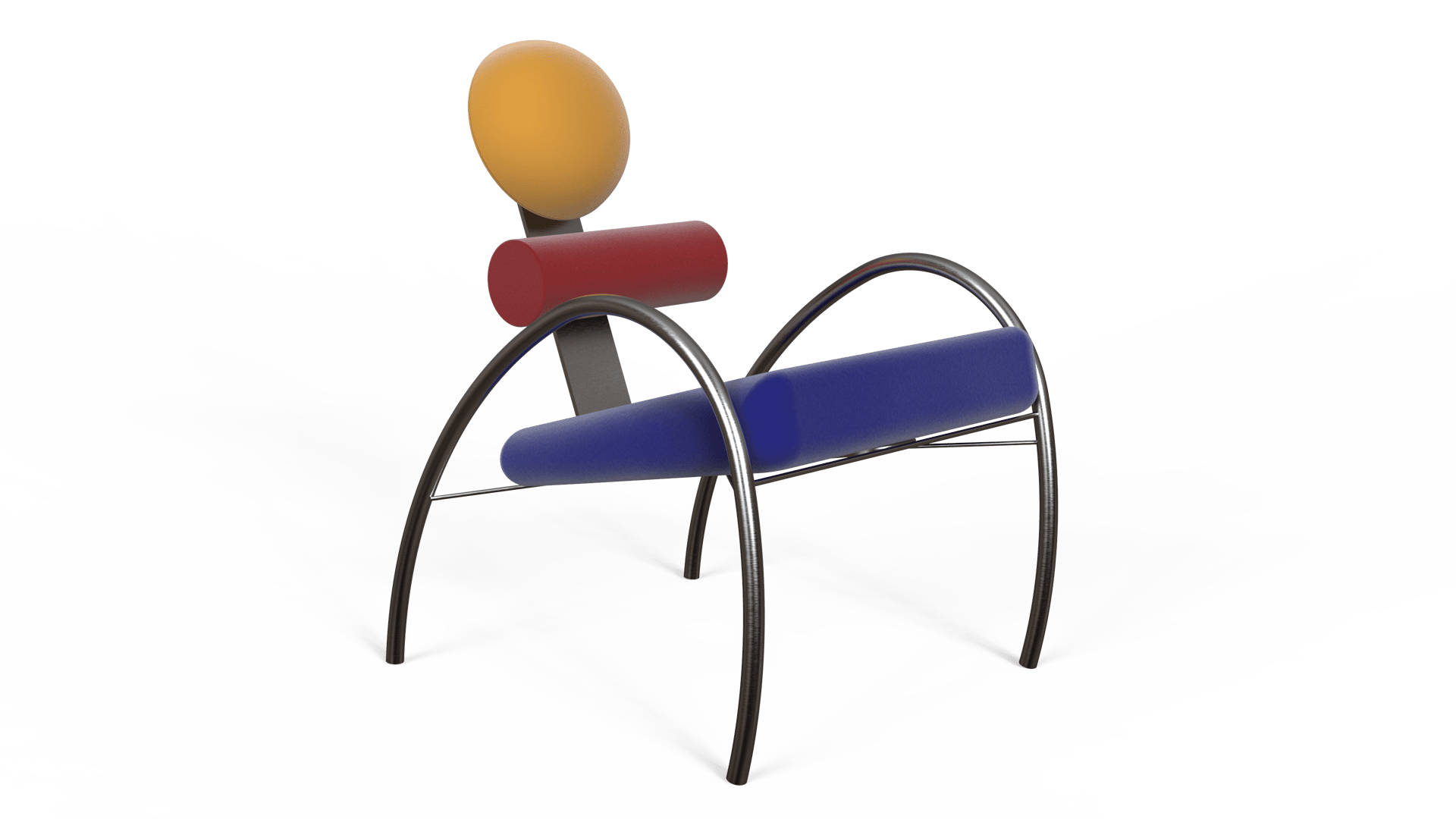
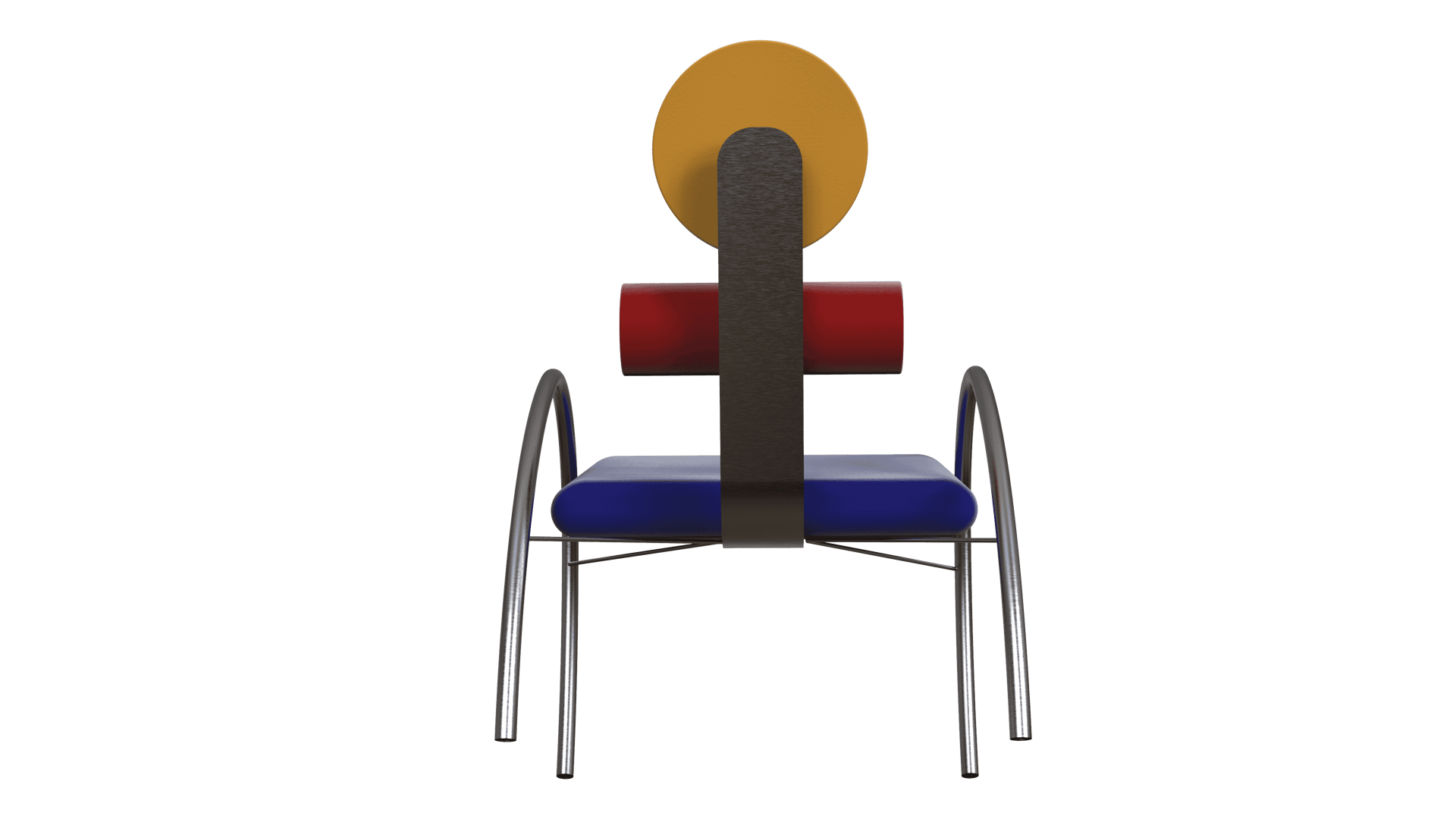
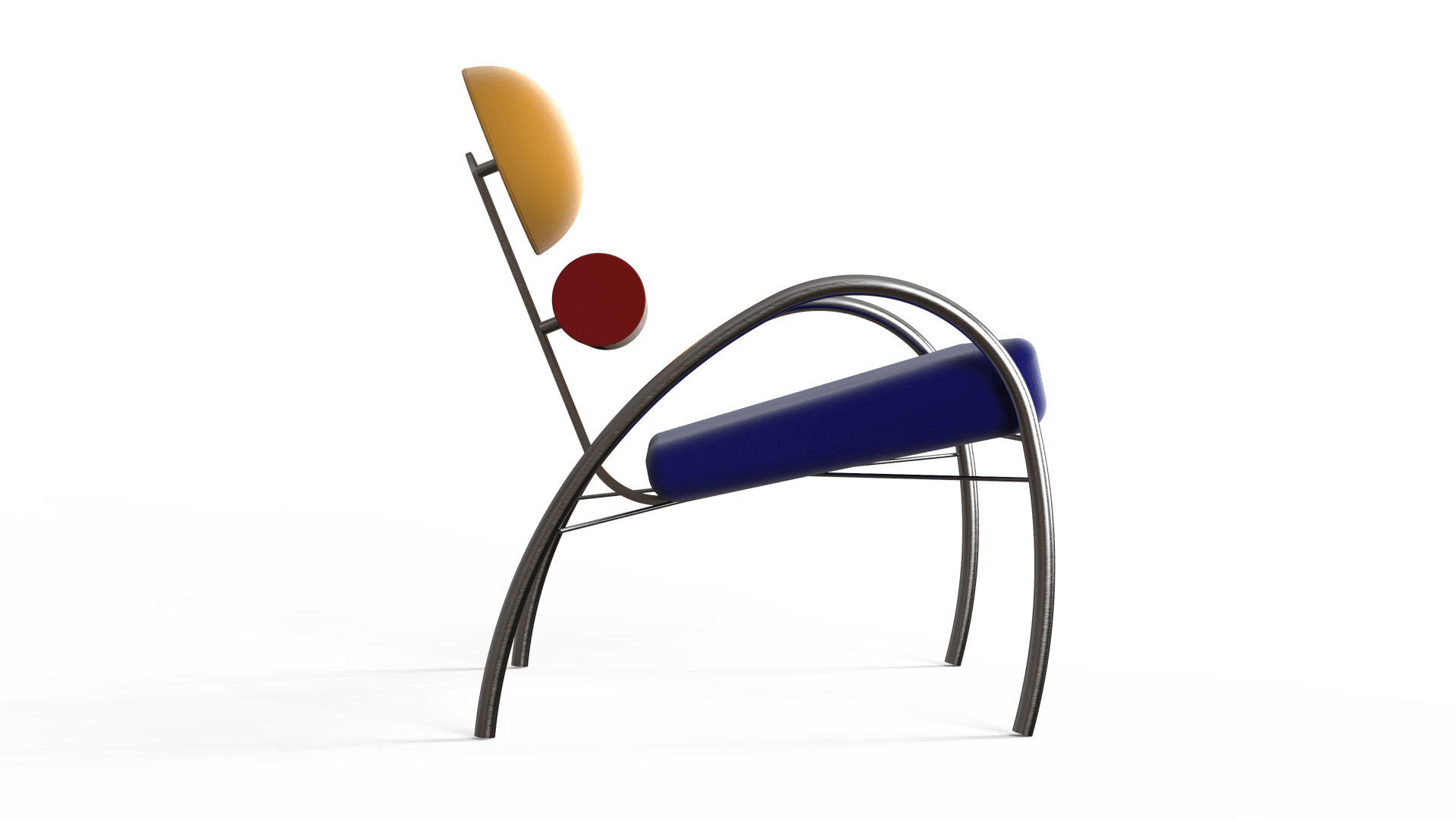
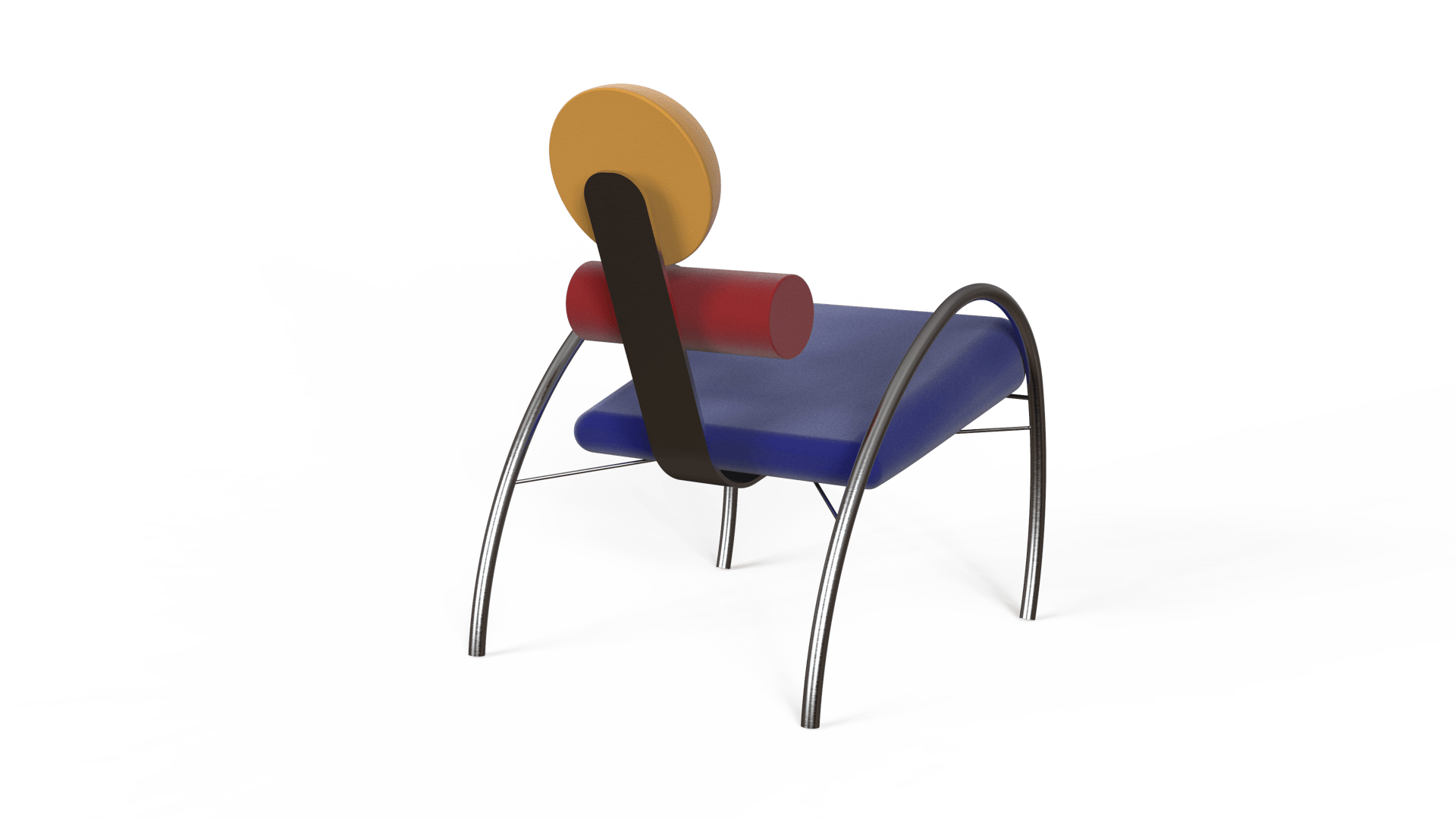

above: Images and renderings of the aulski chair by camila campos
Camila Campos
Project: Aulski
Award: Winner in Chair
Aulski is a chair inspired by the Memphis Group and Bauhaus design movements. The chair emphasizes key features, including geometry and color. It has velvet, circular, and cylindrical cushions, as well as a slanted, squared-shaped cushion. The base of this design is made of stainless steel bars for support and aesthetics. When looking at Aulski, viewers see something different from every angle.
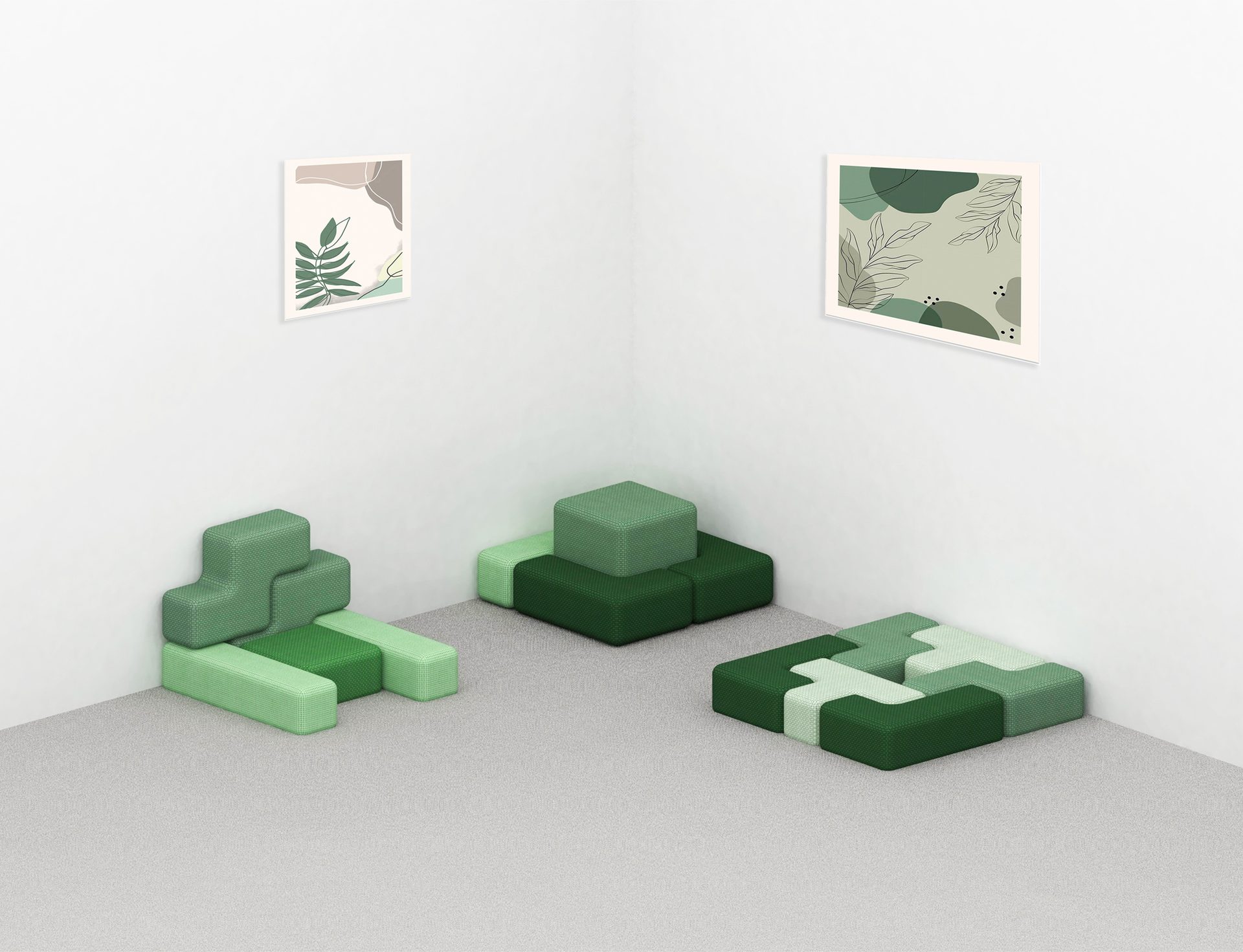
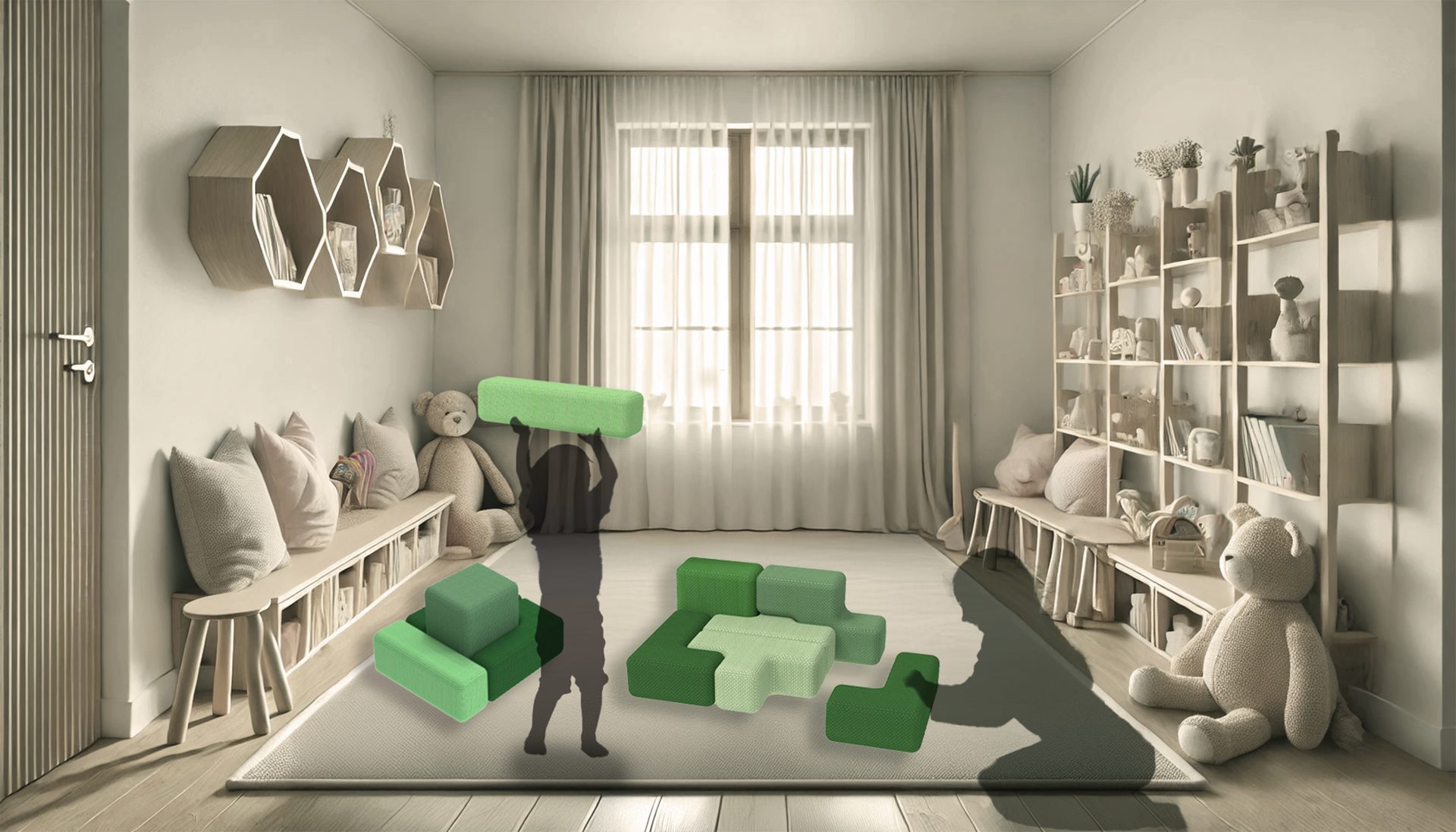
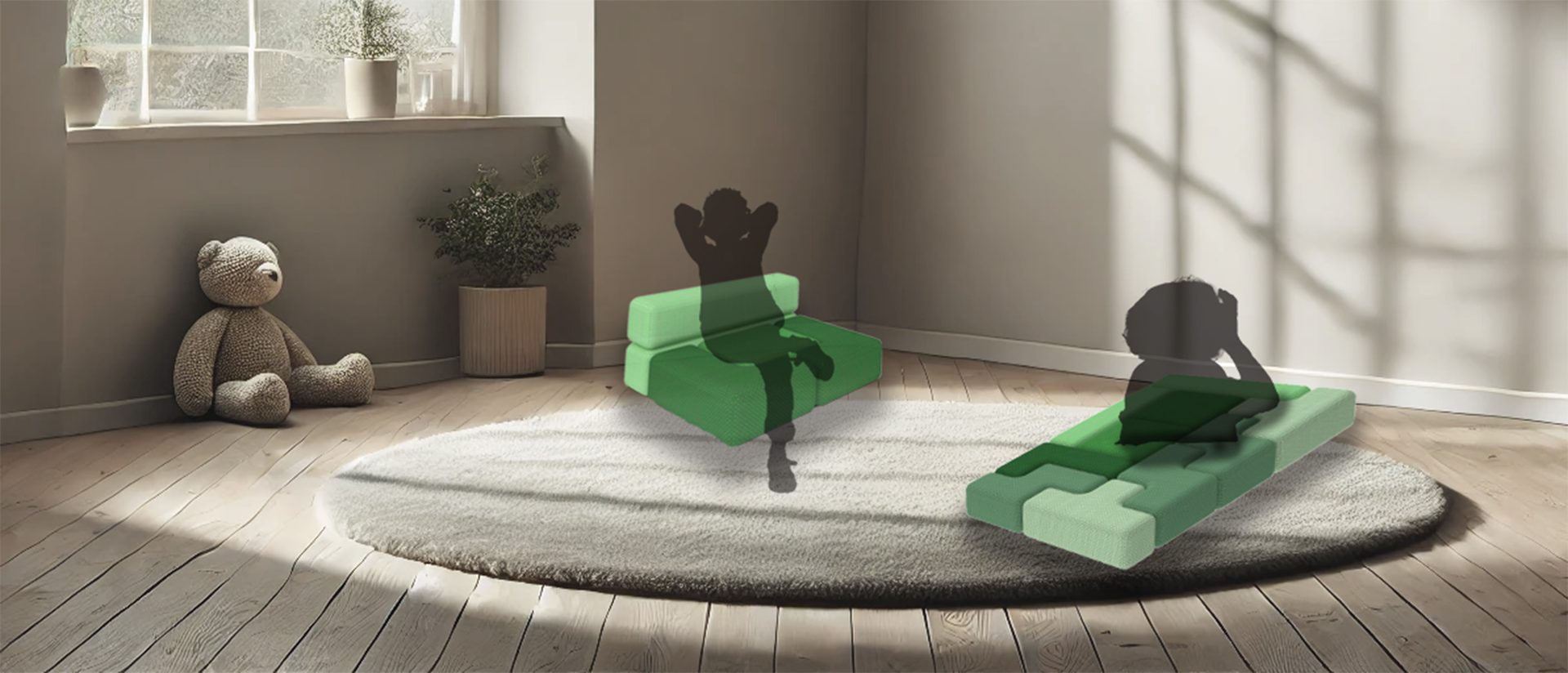
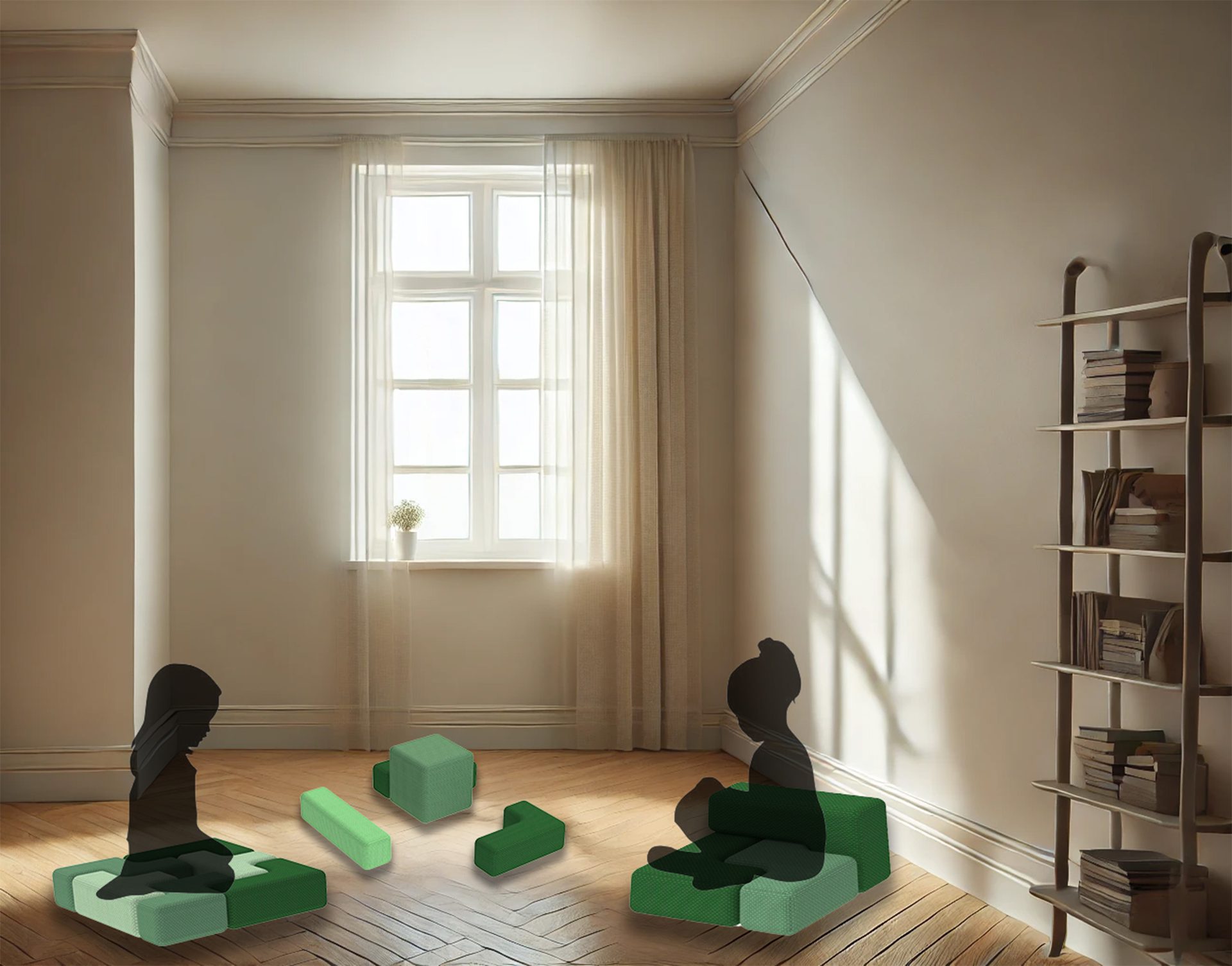
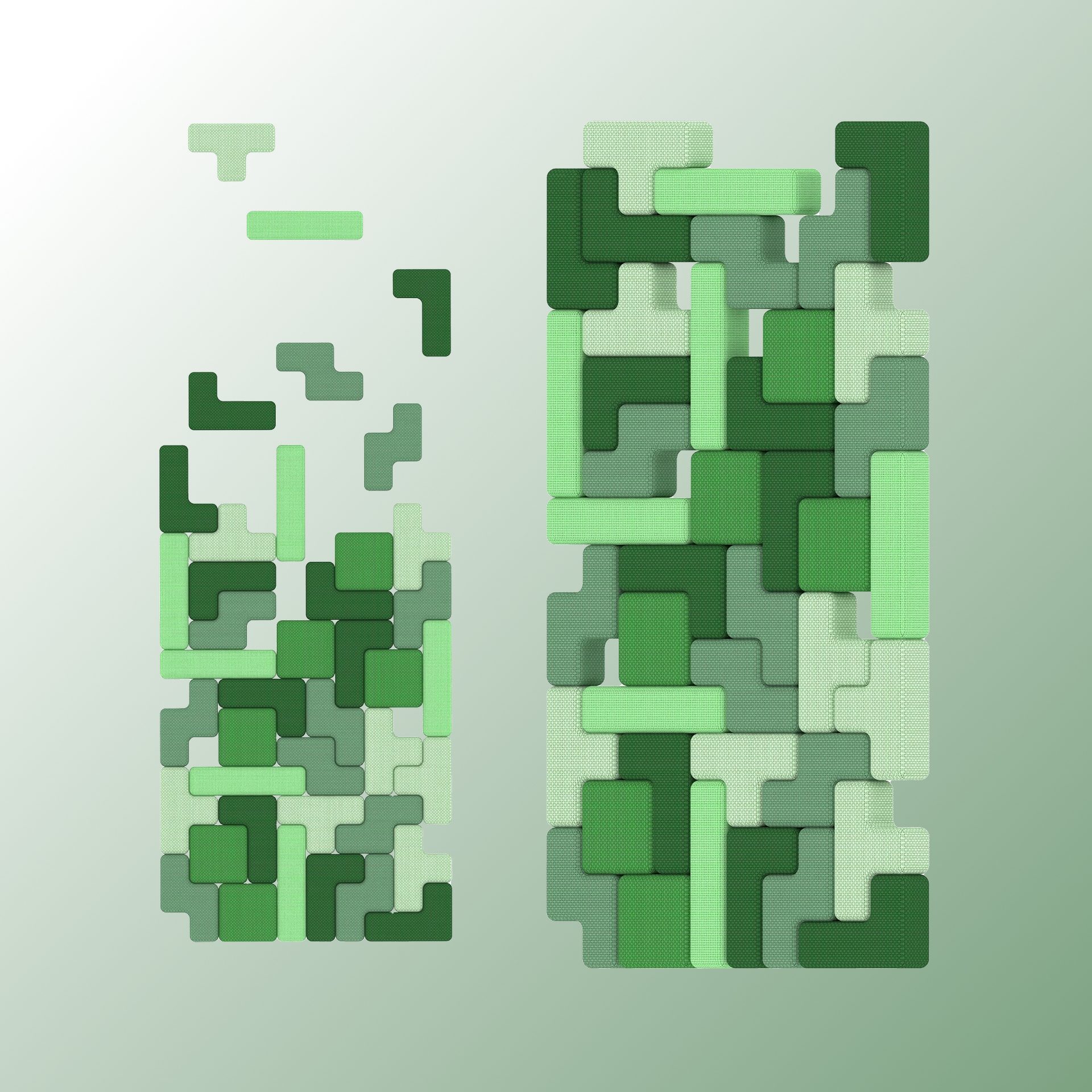
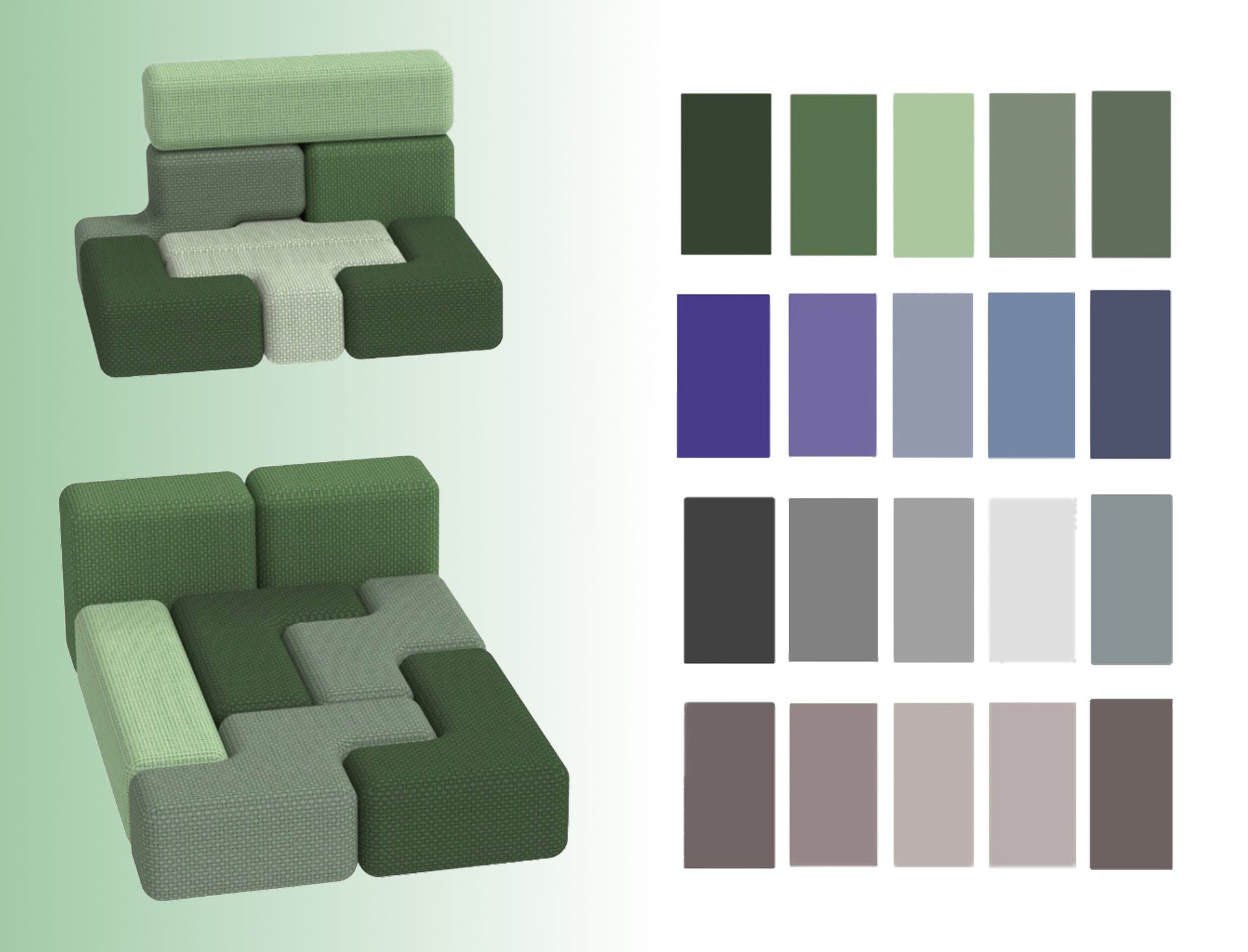
above: Images and renderings of the TETRA SEAT by Rachel Feine
Rachel Feine
Project: TETRA Seat
Award: Winner in Baby & Children Chair; Kids Furniture; and Other Chair
TETRA Seat is a fun and innovative modular seating solution designed for kids to build, play, and relax in any child-friendly environment. Inspired by the iconic shapes of Tetris, this set of soft, cushion-like blocks allows children to create their own seating arrangements — from chairs and small sofas to floor mats and creative play structures. Whether in a school, daycare, home play area, or a child’s bedroom, the TETRA Seat brings versatility, comfort, and endless possibilities to any space.
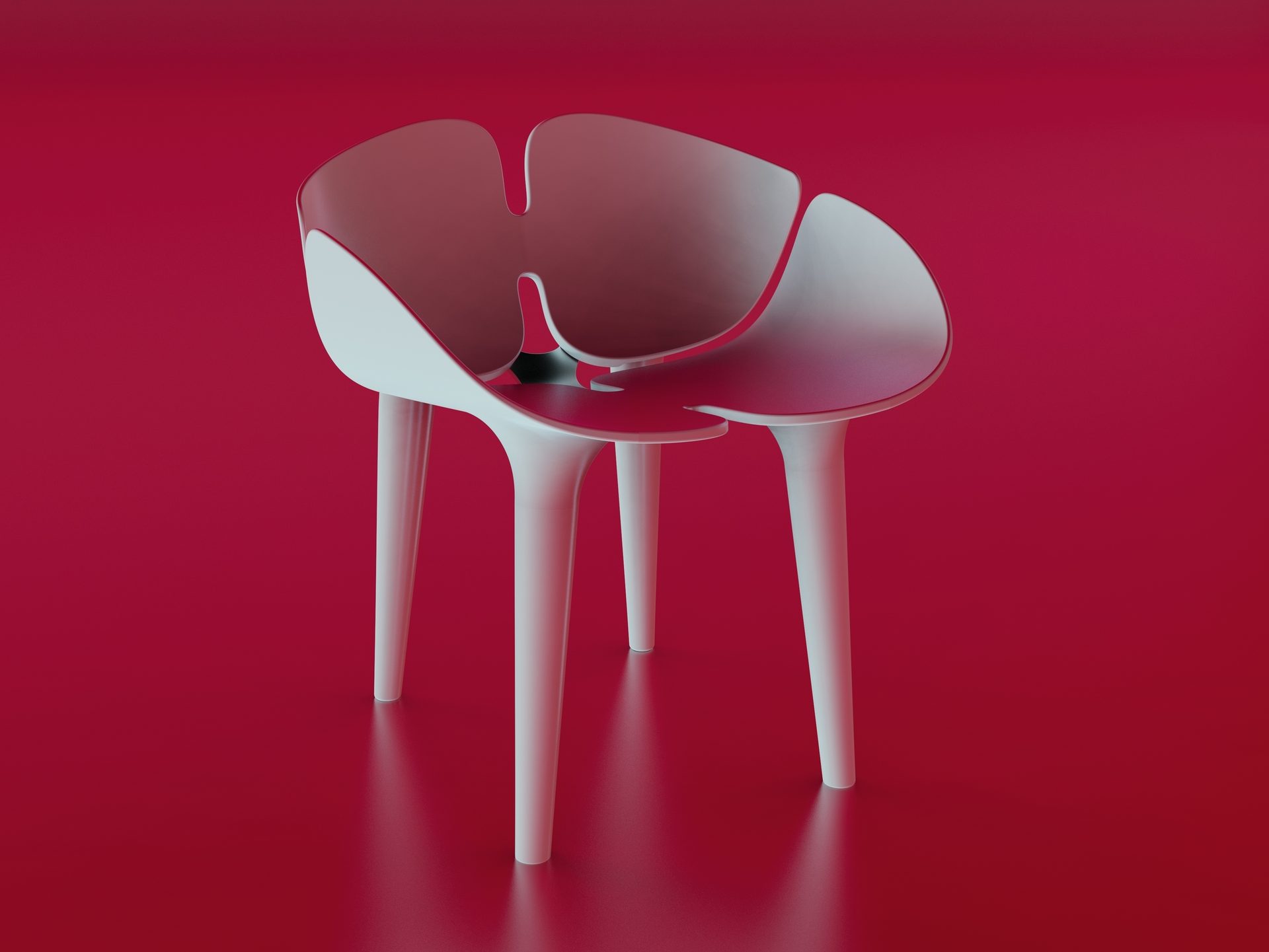
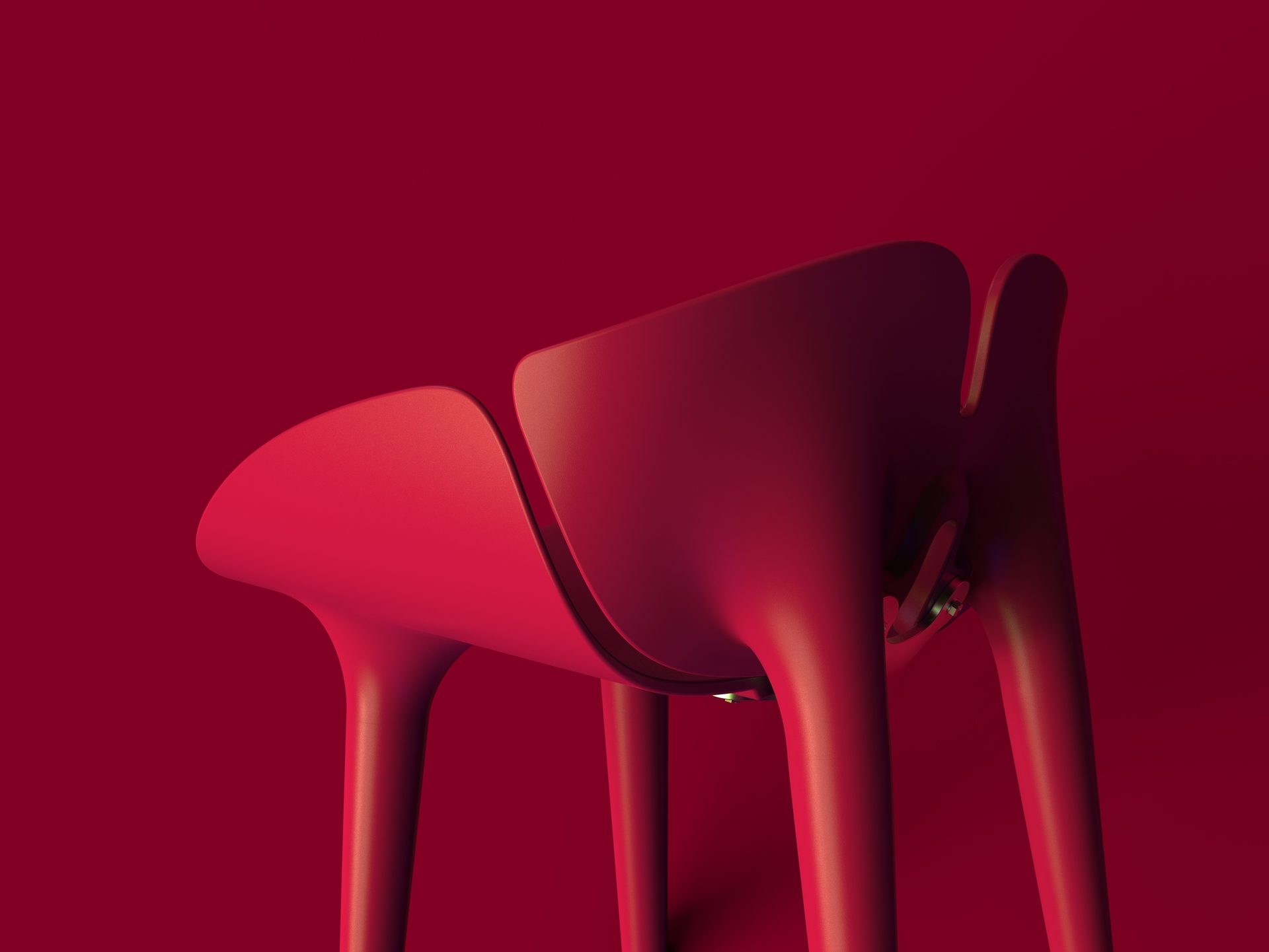

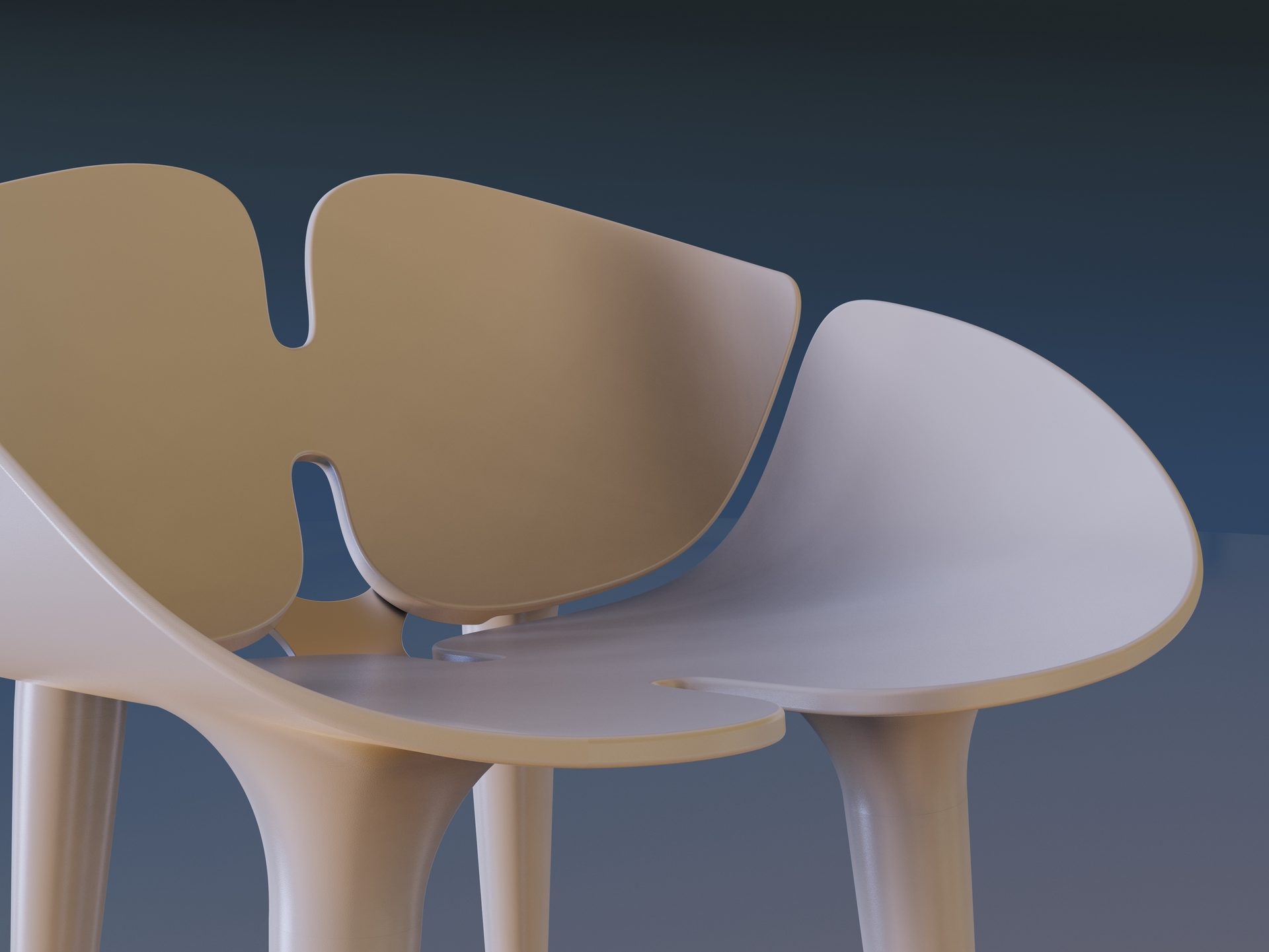
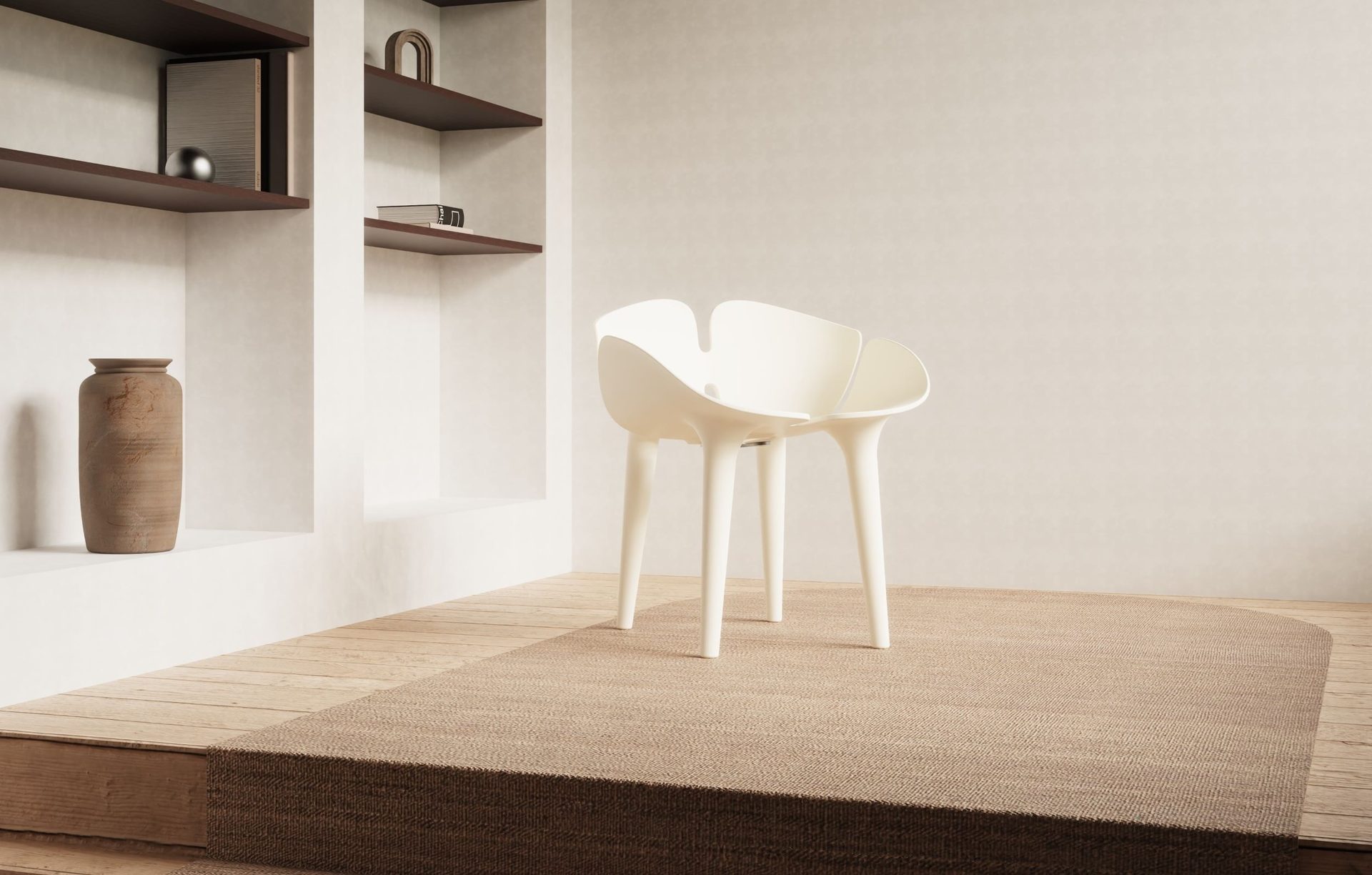
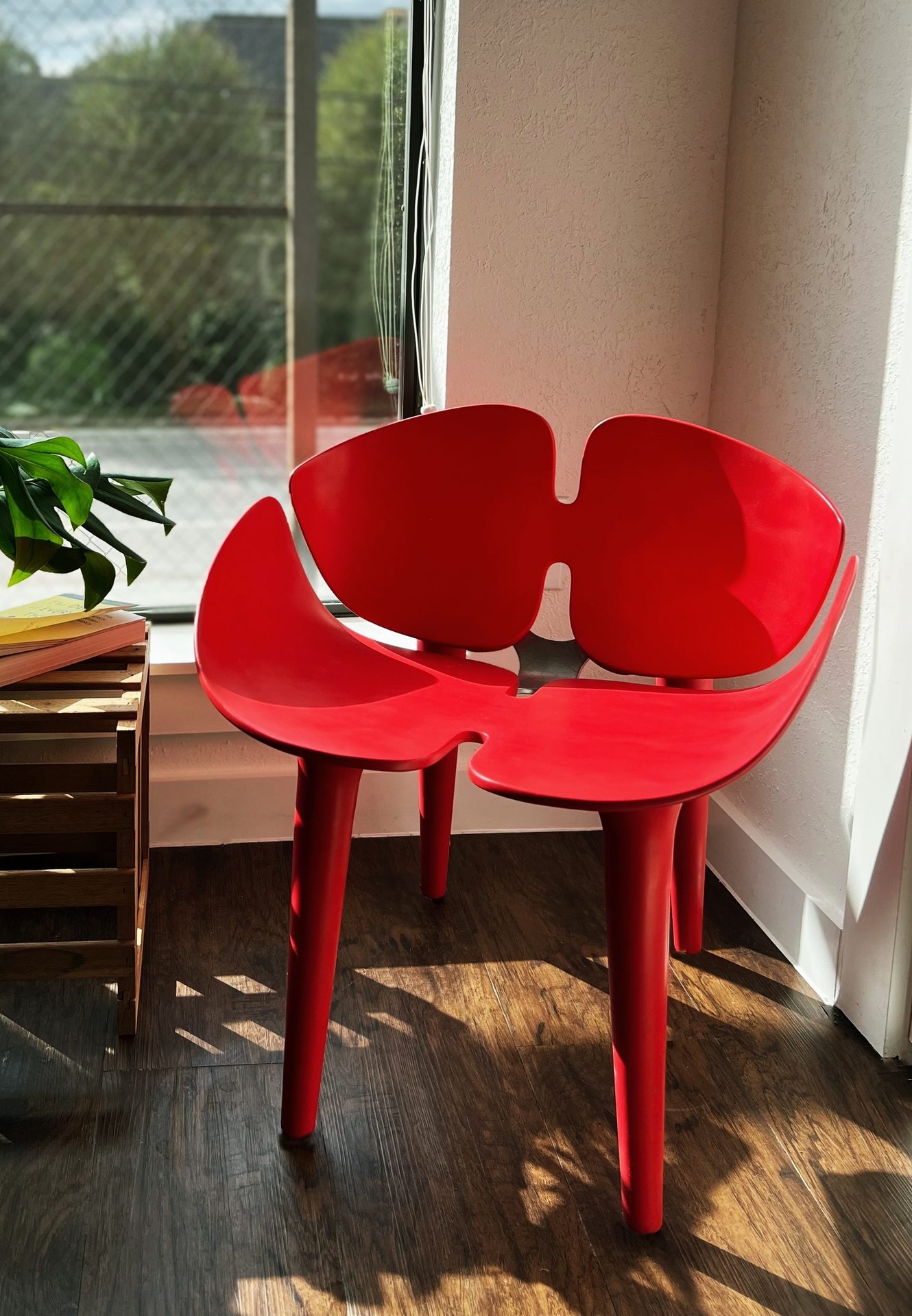
above: Images and renderings of the eddi chair by Mary Leath
Mary Leath
Project: Eddi
Award: Winner in Chair
The Eddi chair embodies a natural playfulness balanced with a simple, bold form. Inspired by monstera leaves, the seat and back piece of the chair are precisely secured with a bent steel bracket to maintain visual interest in the negative space. Threaded legs enable easy assembly with standard hex nuts, allowing the steel bracket to be securely attached. The manufacturing process of Eddi allows for color variations, making the design suitable for a wide range of personal home aesthetics.
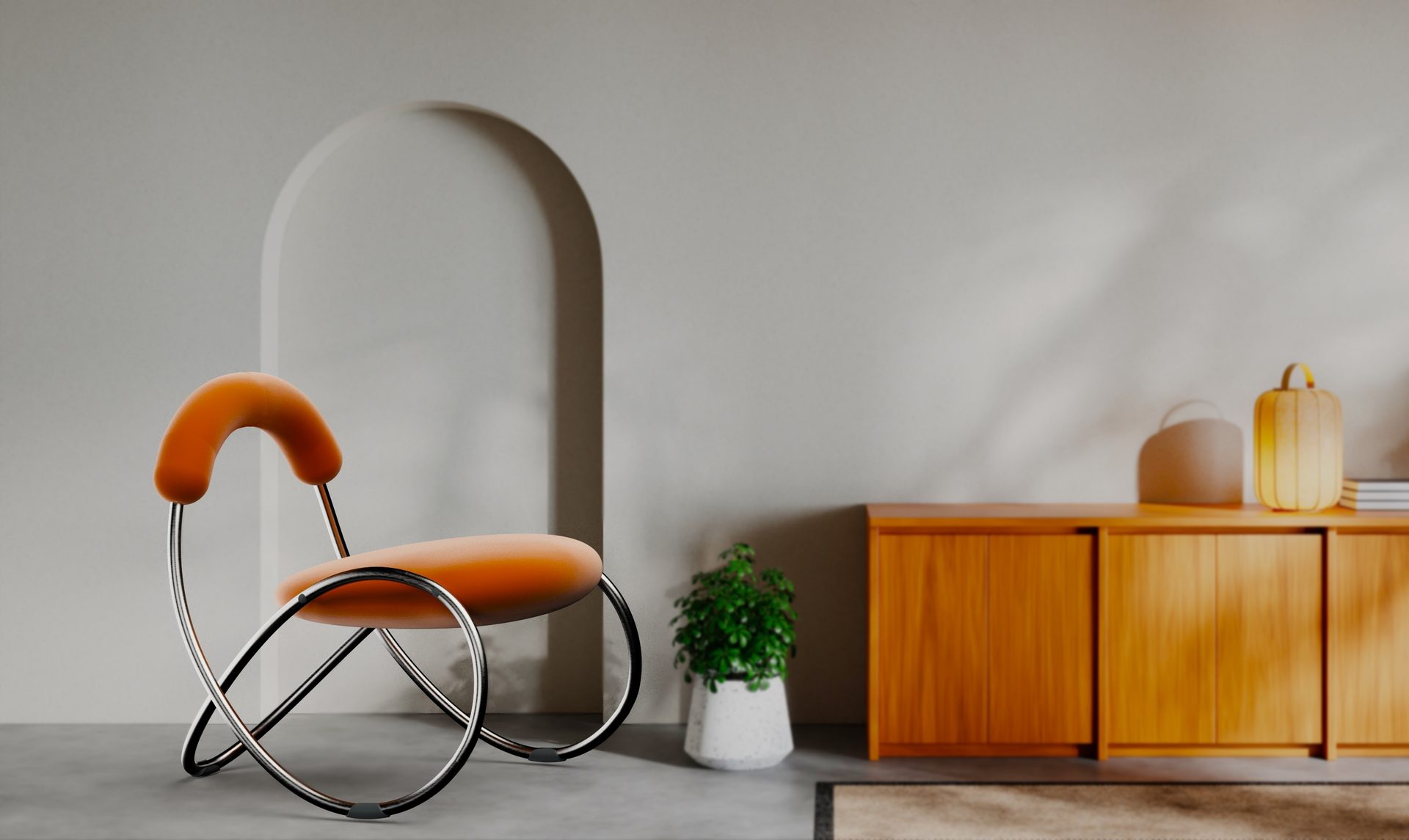
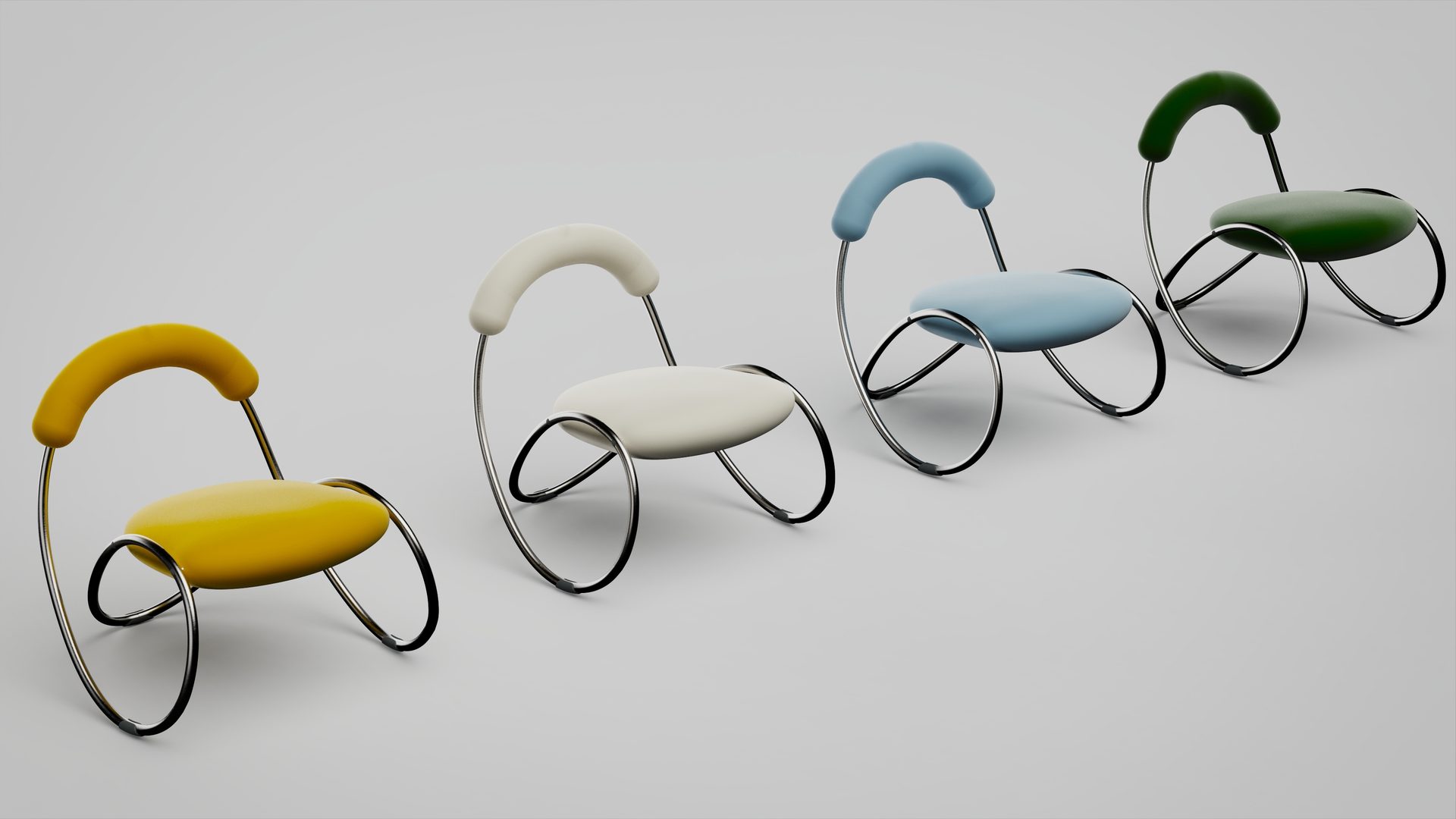
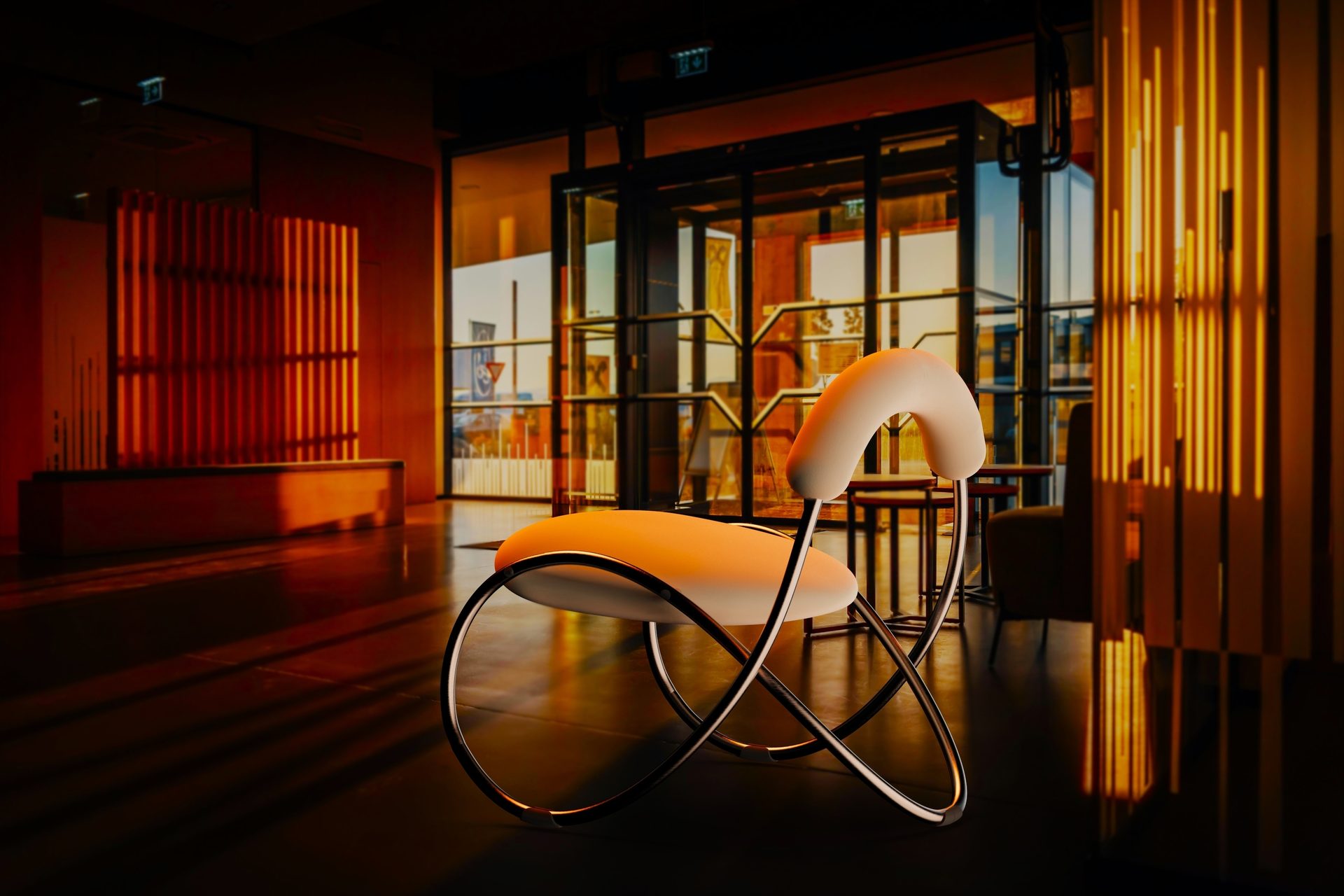
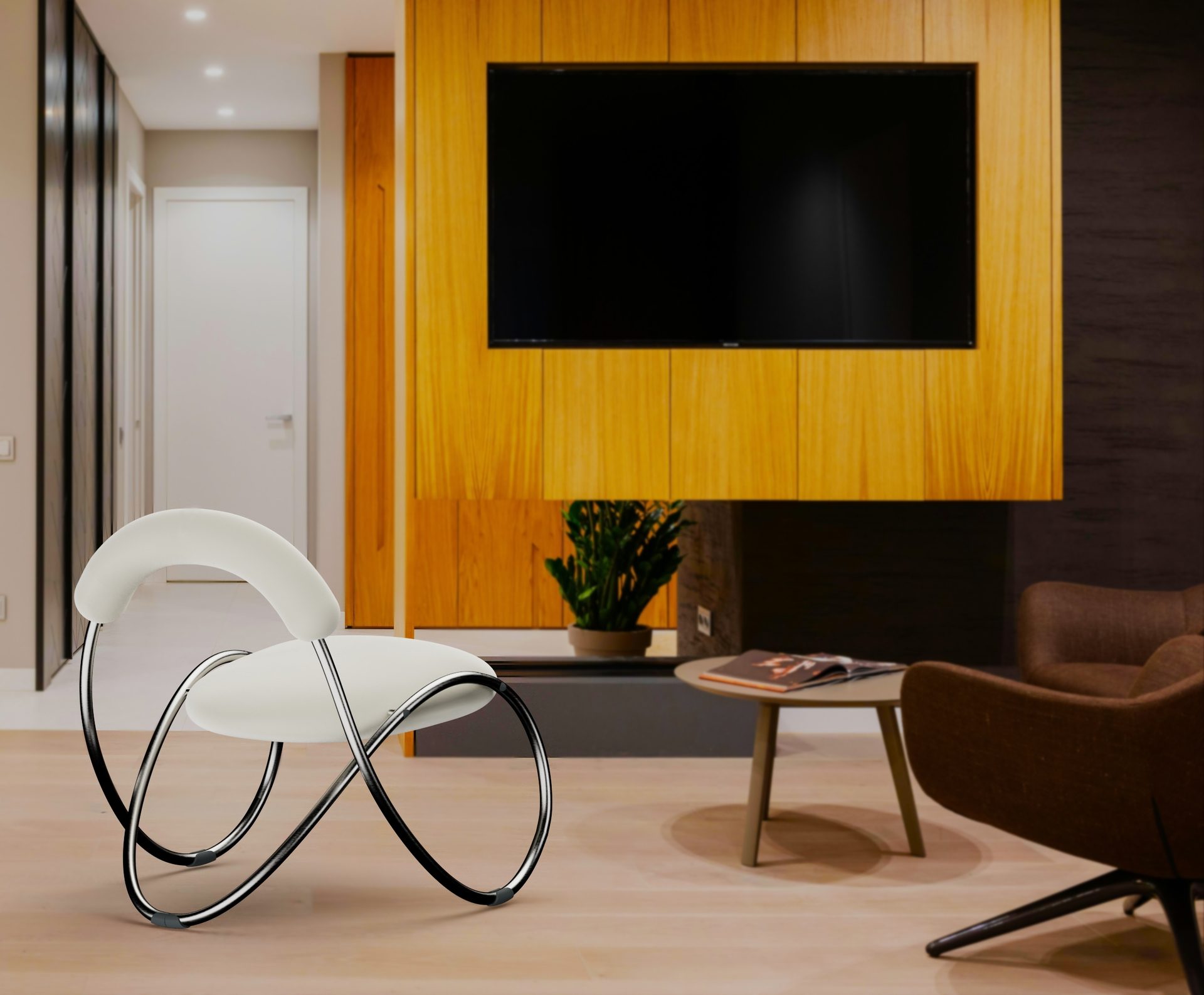
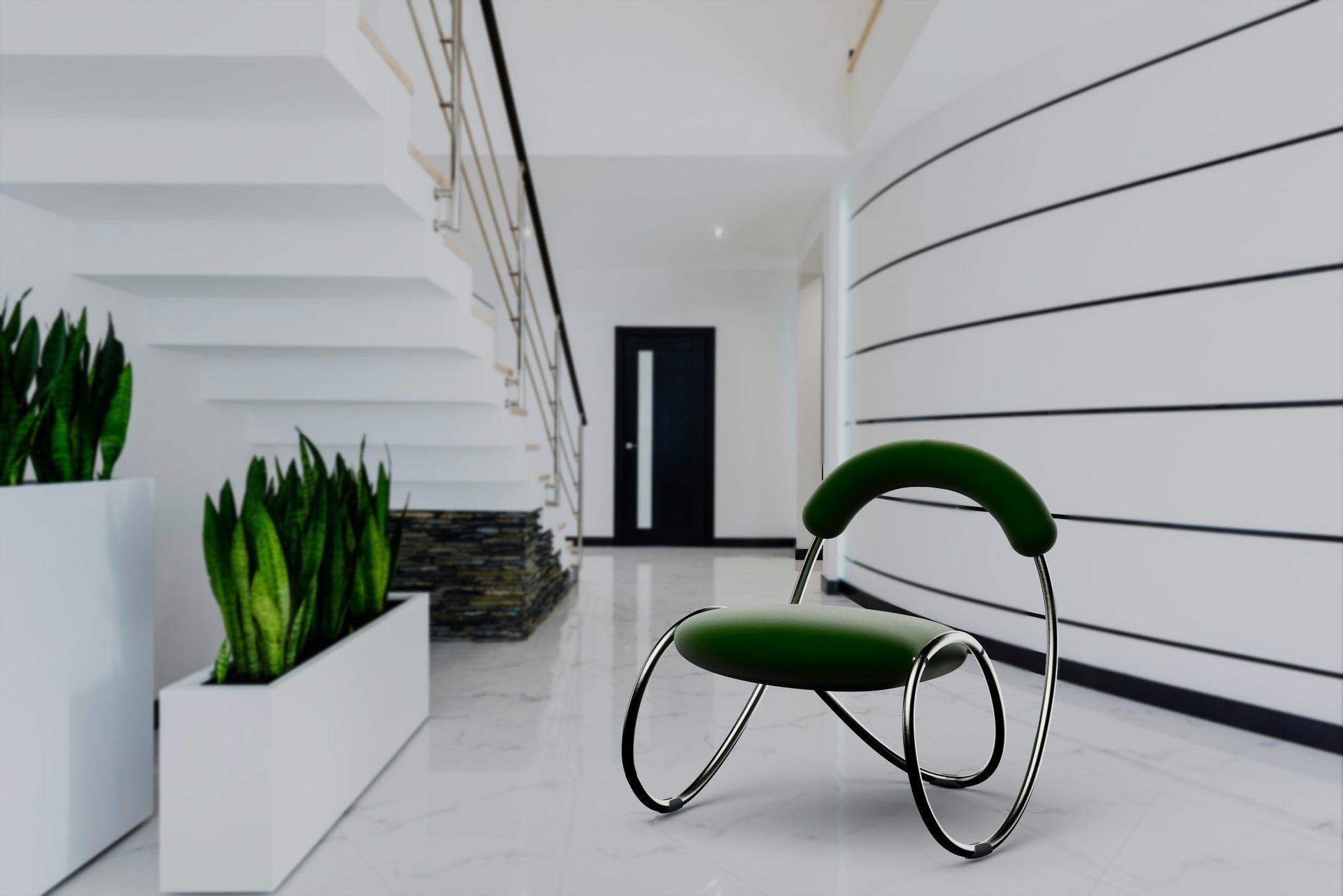
above: Images and renderings of the Infini chair by diya suresh nair
Diya Suresh Nair
Project: Infini
Award: Winner in Lounge Chair
The graceful, curved steel tubing of the Infini chair forms a smooth, continuous loop, while the seat and back cushions mirror the roundness and fluidity of the frame. The chair incorporates detachable rubber stoppers at three connection points to prevent unwanted movement. The frame’s structure is optimized for mass production, utilizing steel tubes bent into three sections and welded together. Its seat is securely attached to the frame with screws, concealed by rubber plugs for a seamless, clean aesthetic. The luxurious velvet upholstery enhances the chair's smooth lines, providing a comfortable and inviting user experience.
More Hines College Stories
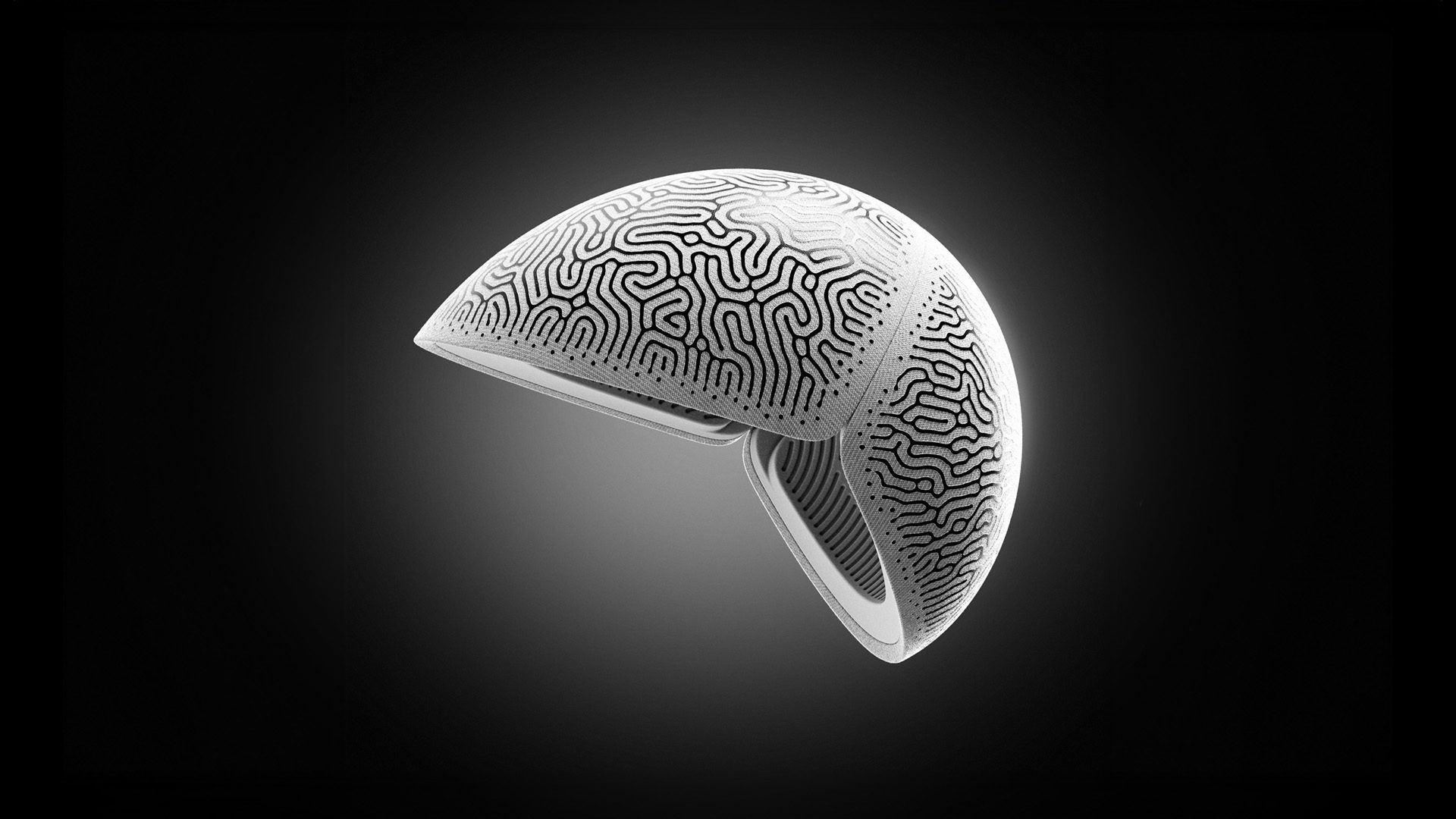
Industrial design students at the University of Houston Gerald D. Hines College of Architecture and Design have broken their own record in this year’s international FIT Sport Design Awards. Nine students won a total of twelve awards, up from six students and awards in 2023. The annual competition calls for both professional and student work, shining a spotlight on designs that are innovative, performance-enhancing, sustainable, and accessible.
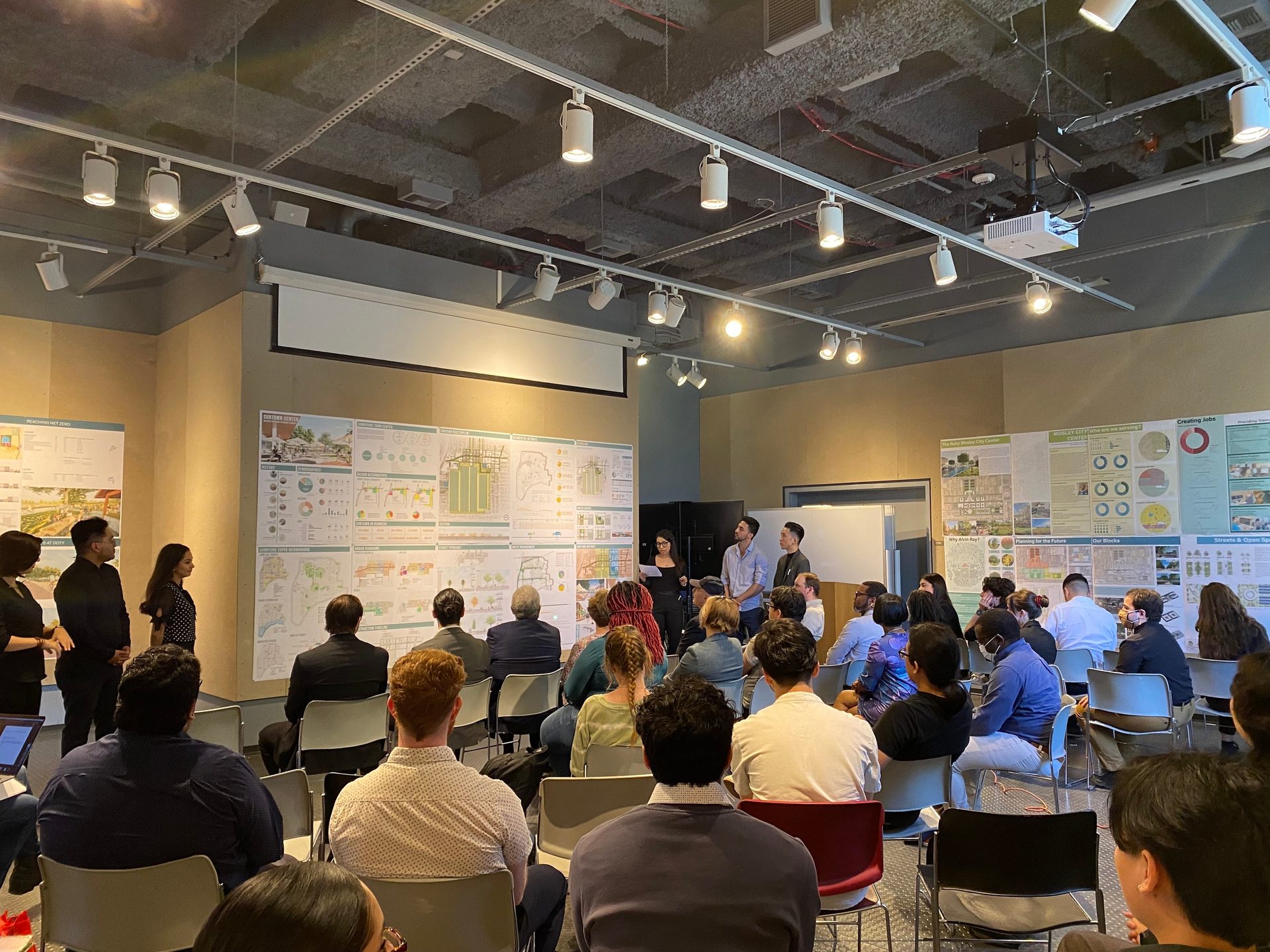
At the Hines College, the QuadZero Studio is training the next generation of climate-conscious architects and designers. Founded in 2016 by Hines College architecture professor Dr. Bruce Race, FAIA, FAICP, the studio has become a crucible for exploring what it truly means to design resilient cities. The name reflects the studio’s core mission: zero greenhouse gas emissions, zero energy waste, zero water waste, and zero landfill waste.
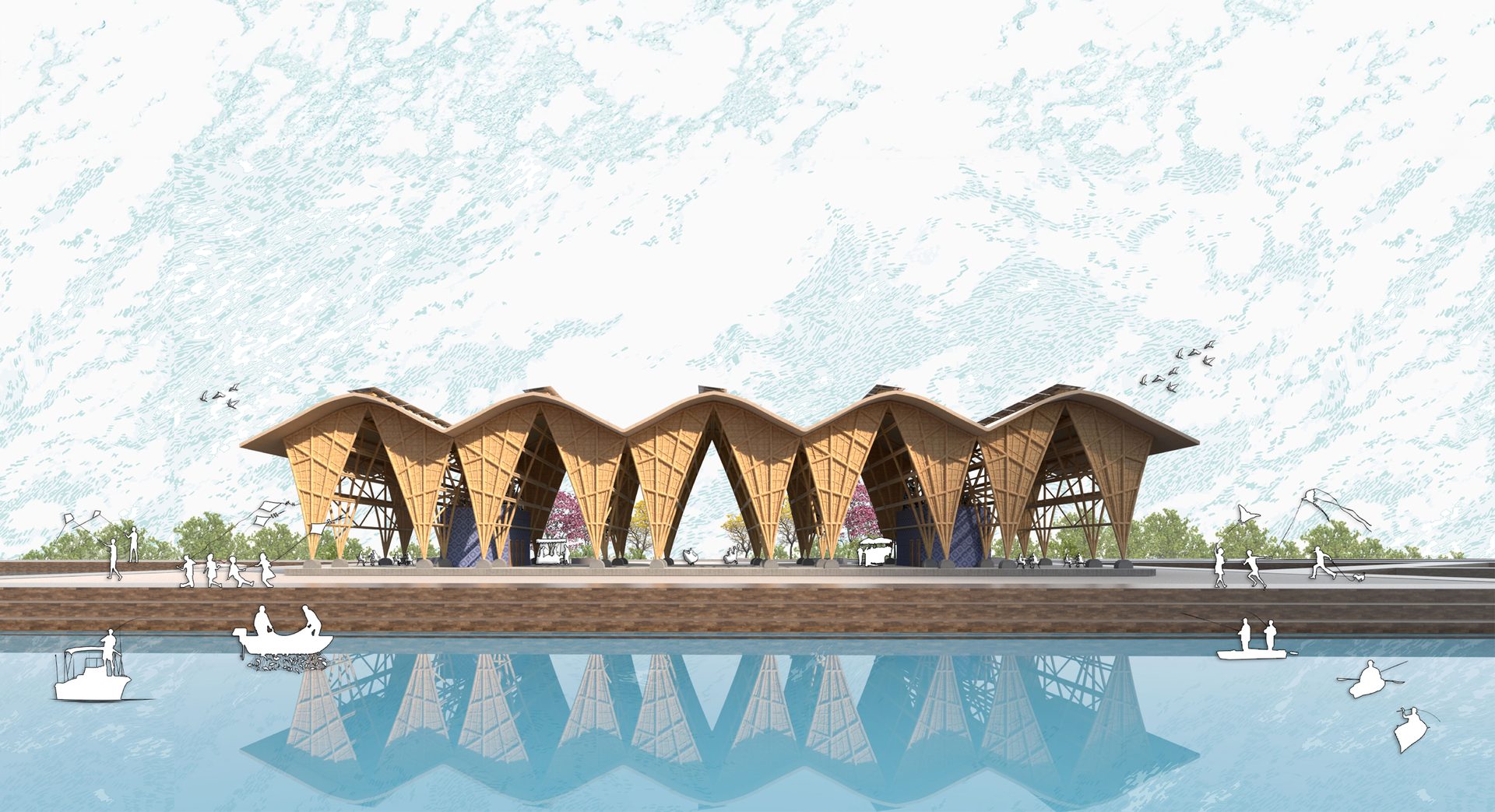
The Hines College continues to shape the future of the Gulf Coast through its investigative Gulf Futures studios, supported by a major grant from the National Academies of Sciences, Engineering, and Medicine (NASEM). Awarded to advance community resilience and adaptation strategies along the Gulf Coast, the grant has catalyzed groundbreaking work by faculty and students, focusing on climate-responsive design, environmental justice, and sustainable infrastructure.




